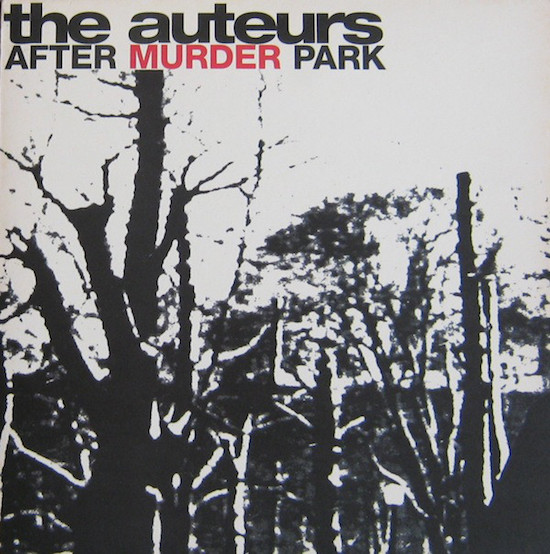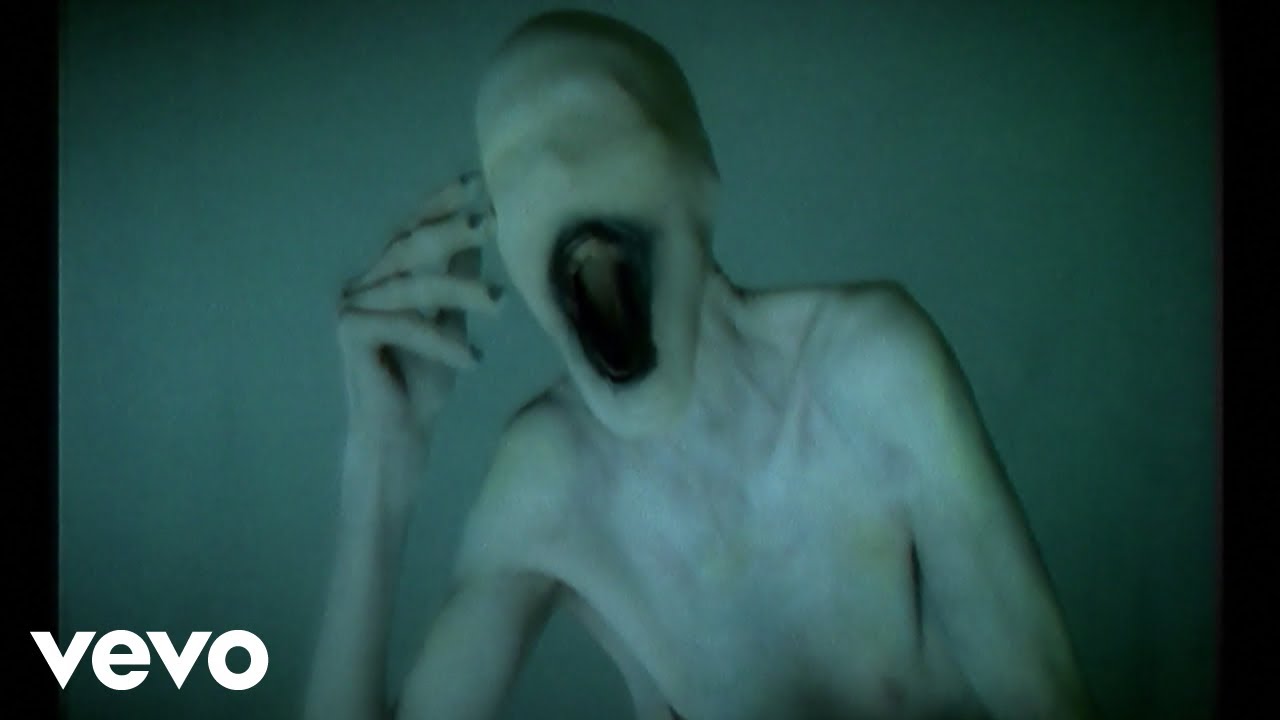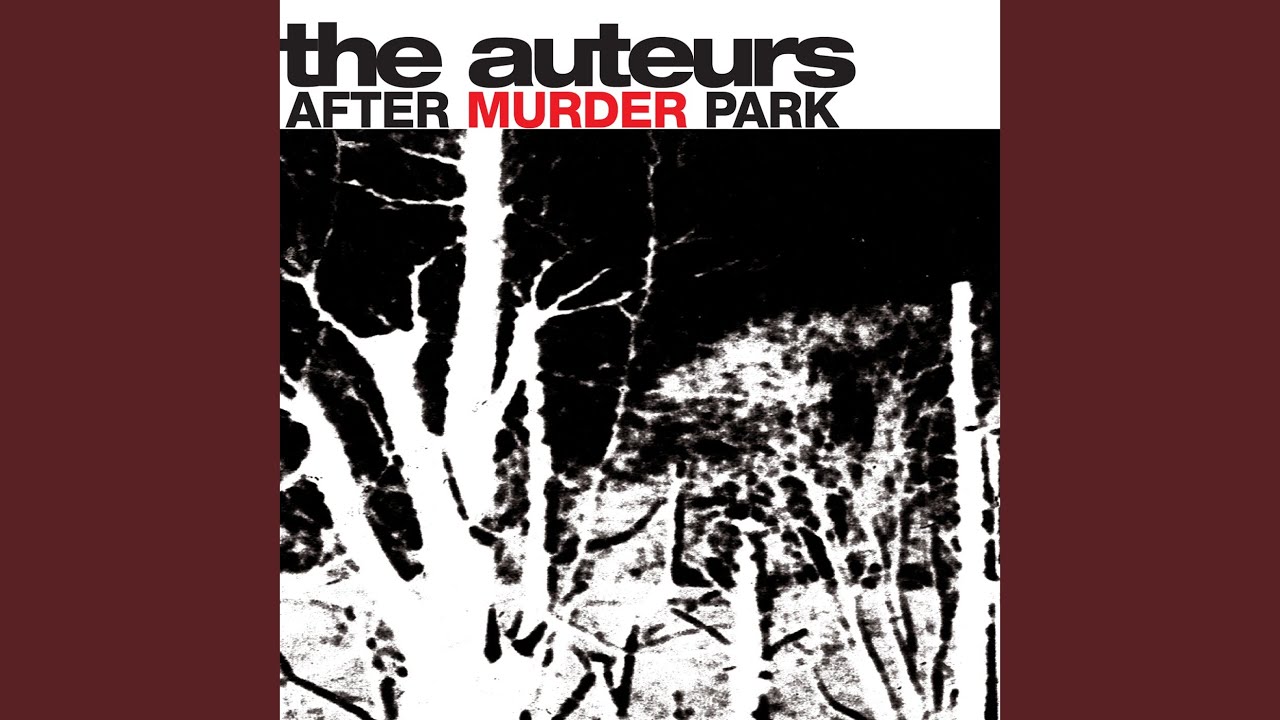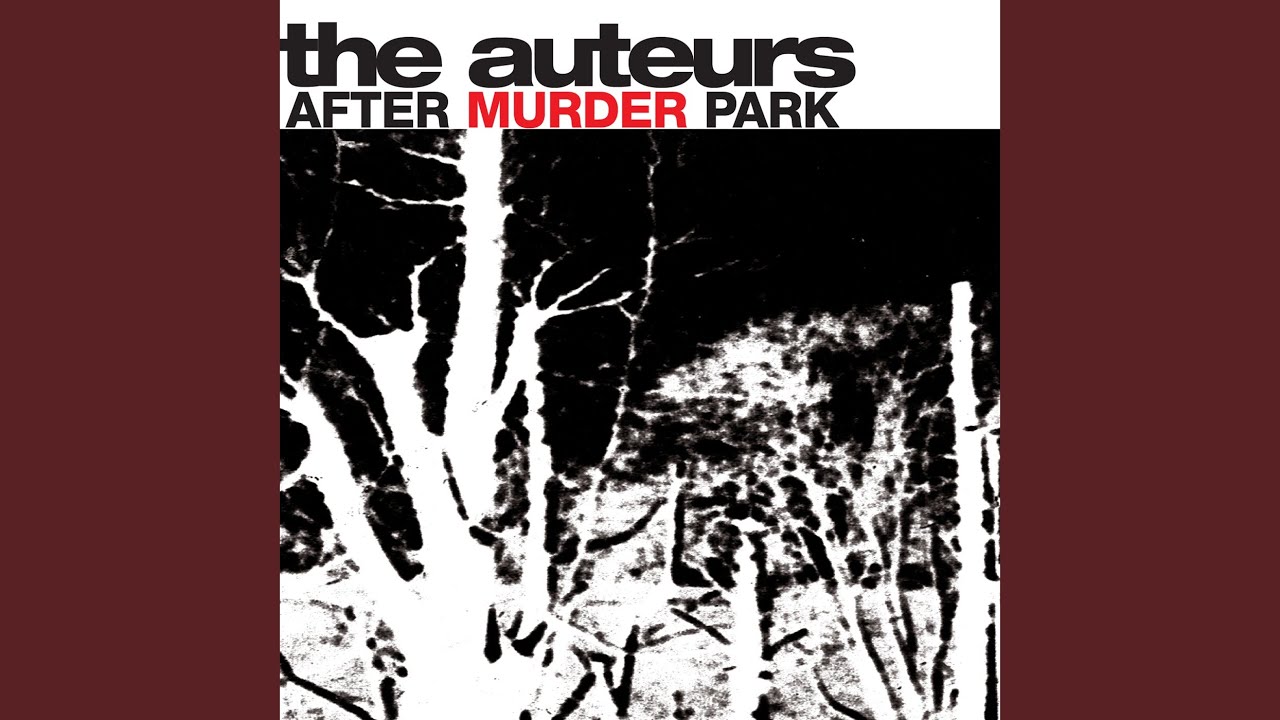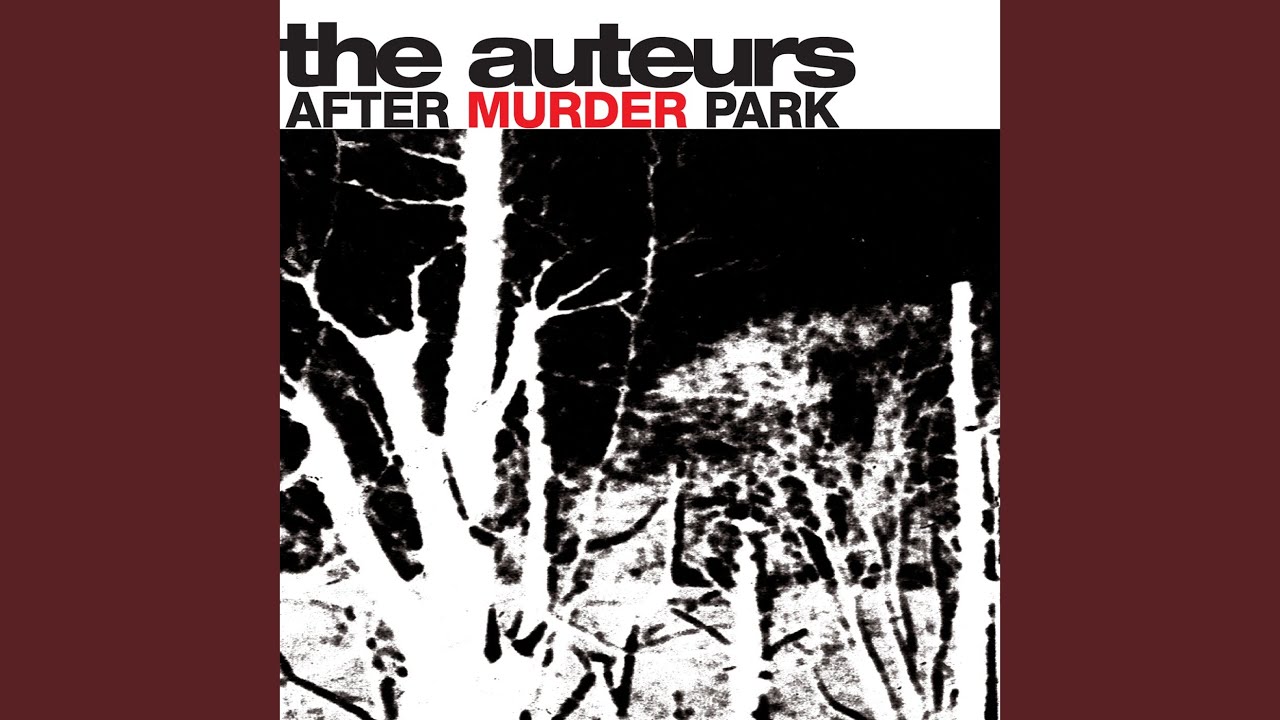As an opening track, ‘Light Aircraft On Fire’ is a vicious, lip-curled statement of intent. After a brief tease of melodic guitar, Luke Haines crashes into a furnace black riff, hissing his words out like a man rapidly running low on oxygen: “When you cut your lover slack/ You’ll get a monster back”. Haines will return to this theme of unleashing monstrous thoughts, but for now he’s sticking with self-immolation and hints of a “dark premonition”, with “a pre-science preacher in the cabin”. The bridge has a bone-crushing, militant vigour, while the chorus clutches onto that initial hint of melody for dear life. But ultimately, this song is a high velocity death wish, a petrol bomb smashed against the Britpop system. Whether anybody notices is a different matter…
On 4 March 1996, The Auteurs release After Murder Park, their third LP. It receives mostly decent and lengthy reviews, and goes on to sell 58,000 copies worldwide. This is a figure beyond Haines’ wildest dreams when he first started the band, but in the feverish atmosphere of competition that now exists in the world of British guitar pop, it’s deemed a commercial failure, and indicative of a slow but steady decline in their fortunes. Who knew that at the height of the gormlessly positive Britpop episode, punters weren’t inclined to buy a collection of songs about child murder, suicide, domestic abuse and alcoholism?
How had Haines arrived here? The Auteurs set out their stall as purveyors of sophisticated, if slightly arch, pop/rock with their ‘Showgirl’ single in 1992, and entered into an informal alliance with critical darlings Suede: the sky seemed very much to be the limit. Melody Maker put Haines on the front cover and hailed The Auteurs as the “new saviours of UK rock”, with their 1993 debut album New Wave featuring near the top of all the end of year polls. What could possibly go wrong?
In his mostly reliable (and very funny) memoir Bad Vibes, Haines himself identifies the rot setting in with the release of Blur’s Parklife in April 1994 – not that he felt their music was superior to his own of course (oh no), but its enthusiastic embrace by both the mainstream and the indie masses marked the point at which Britpop moved out of the pages of the music press and into the real world marketplace. After years of being a minority concern, the British indie scene had finally birthed a genuine unit-shifting phenomenon (on this side of the pond, at least). Guitar bands were no longer just judged on the music they made and the poses they pulled, but on how many records they sold – and Haines found himself being sucked into the machinery of all that entailed.
Events came to a head in September 1994 during a European tour promoting their second album Now I’m A Cowboy. Sick of the rigmarole of playing the same songs night after night with a band he professed to hate (more on this later), and plagued by the type of ghostly hallucinations that suggest a mind unravelling, Haines drunkenly jumped off a high wall in the Spanish seaside town of San Sebastián, and broke both his ankles. He rationalised this action as a deliberate self-hobbling in an effort to escape the promotional treadmill, and while an extreme solution, it certainly did the trick. (Haines later admitted it was just pissed-up behaviour, and a miscalculation about the surface he was jumping onto, which turned out to be concrete.)
Reduced to bumping around the basement of his Camden flat in a wheelchair as he recovered, Haines made use of his hard-won free time by writing The Auteurs’ next album. Unsurprisingly, given his general disillusionment with the music industry, and the bunker-like isolation of his circumstances, the subject matter of the songs that began to emerge was dark to say the least. While Haines had previously written about a class-ridden metropolis full of social climbers and decadent sub-aristos, he now pushed out further into the psychic hinterland of middle England: the projected title of the new album was Uber Hate.
Inevitably, it was also a reaction to what was happening right outside his pavement-level window, having had the misfortune to move to NW1 just as it became the epicentre of puffed up, Britpop wannabedom. As Haines notes in Bad Vibes, while “the full idiocy of the era has yet to be felt,” the signs of what was to come were everywhere, with the ascendancy of Oasis’ dreadful, Neil Innes-cribbing ‘Whatever’ single being a particular affront to common decency. The fact that, for many music journalists and fans, The Auteurs were now viewed as being merely a precursor to Britpop was an especially bitter pill to swallow, and it clearly left a very bad taste in Haines’ mouth.
The new songs were raw and gnarly, but while Haines’ words were often a malignant stream of consciousness, the music was lean and tight, with the band producing a harsher, much harder sound. That’s not to say that The Auteurs had ever been a fey jangling band, despite their coy, half-joke of a name – Now I’m A Cowboy in particular has a big rock production, with the impacted crunch of tracks such as ‘Lenny Valentino’ and ‘New French Girlfriend’ toughing it out with the best (and worst) of them. But as he’s since revealed, Haines felt that the press had misconceived him as “some sort of milksop”, an image he was keen to shake off once and for all.
He had already earmarked the man who was going to help achieve this end, and to Haines’ surprise, his record label Hut agreed to hire him: Steve Albini. In fact, The Auteurs had already demoed a couple of tracks with him earlier in 94, and as well as approving of his brisk working methods, Haines had sensed a kindred contrarian spirit. The band entered Abbey Road studios at the end of March 1995, and just two weeks later, the new album – now titled After Murder Park – had been recorded and mixed, and was ready to go…
And then nothing. In a display of typical record label anti-logic, Hut decided to hold back its release until the following year, which left Haines to seethe through the summer of the great Blur Vs Oasis debacle, his “stinking fucking corpse” of an album left on the shelf when it could have been a righteous corrective to the contrived, overinflated spectacle that Britpop had rapidly turned into. Haines tried to keep his spirits up by beginning to formulate his next project, a glam-funk concept album about West German terrorist group the Baader-Meinhof gang. The Auteurs also returned to the studio to record ‘Back With The Killer Again’, an angular, haunted rant that nevertheless became the lead track of an EP released in January 1996 – its video, an early effort from future Aphex Twin collaborator Chris Cunningham, was so unpleasant that it remained largely unseen.
Then finally, nearly a year after it had been recorded, After Murder Park was led blinking and screaming into the light of day…
[]
If ‘Light Aircraft On Fire’ kicks the album off with a howl of existential terror, ‘The Child Brides’ is the uneasy calm after the storm, its pretty acoustic melody bearing a song that’s both melancholic and creepy. It’s a definitive example of Haines’ skewed method of lyrical reportage, where perspectives and ‘speakers’ change between lines – it’s also full of casual, brutal details: “In a loveless marriage when I was fourteen / All braised knees and black eyes”. It’s a picture of an isolated, secretive community where the only escape for the titular characters is to drown themselves at sea. A cello wanders forlornly through the song, while bass and toms rumble underneath. Strings and some gentle harmonium enhance the beautifully sad atmosphere, mourners at a funeral.
‘Land Lovers’ skips merrily into view, before morphing into an amphetamine rocker that flirts with a metallic atonality. It’s another track that seeps belligerence and paranoia, Haines spitting out queasy wartime imagery about “espionage”, “doodle bugs” and “American bombers”. It’s like he’s free associating or speaking in tongues, the glossolalia of a feverish autodidact who’s gorged on WW2 documentaries and the buried histories of this septic isle. Haines is poking at the underbelly of Brexit Britain before such a thing existed in the public imagination – but it was most certainly still there. You can also hear why David Peace, author of the transcendentally bleak Red Riding quartet of novels, was a fan – it uses the same fervid, fractured, allusive language to peel back the lid of something feral and without reason.
The stripped-back, malevolent intro to ‘New Brat In Town’ explodes into noise, Haines shouting hoarsely against a violent skirl of Hammond organ and neck-snapping snares. Following the post-New Wave sacking of original drummer Glenn Collins, The Auteurs gained two new members, becoming in Haines’ words, “a singer songwriter with his girlfriend and two hired hands.” They were Barney C Rockford, a man who plays drums exactly as his name suggests, and cello/keys player James Banbury, who Haines disdained as a careerist fop. Yet even Haines has to admit that on After Murder Park, “these two cunts are really coming into their own”, and how… Rarely has a Hammond sounded quite so fucked up and evil, twisting like a shark at the end of a steel fishing line, its sustain fizzling like rotten air. And the way that Rockford slugs away at his kit is a perfect analogue for the song itself, wired on threats and the stench of small town intolerance, some whey-faced pretender about to get their head stomped.
[]
‘Everything You Say Will Destroy You’ radiates a strutting, grizzled buzz, and its snarled chorus is wonderful, the idea of self-destruction being a key Haines trope – speaking truth to power can nevertheless still land you in a whole heap of shit. Its words bring to mind the Christine Keeler affair, somebody who found herself with a starring role in bringing down the establishment, only to be crushed by the collapsing edifice. But relatively speaking, it’s a throwaway bit of fun compared to what follows.
Which is a lovely piece of playful orchestral pop complete with French horn flourishes, a pre-emptive, pocket baroque nose-thumb to anybody foolish enough to suggest that Haines had lost his gift for a catchy tune. Yet more of a provocation is its title: ‘Unsolved Child Murder’. What could have been a crass prank is nothing of the sort – it’s an unironically pretty song allied to some of Haines’ most vivid and evocative lyrics, desperate parents driven mad by grief, preyed on by mediums and spiteful neighbours. This was before Madeleine McCann, yet it captures the same sense of a family tragedy turned into a grotesque media circus by a ghoulish press and British culture of rubber-necking. But the timing of After Murder Park’s release was appalling all the same: just a few days later, Thomas Hamilton entered Dunblane Primary School and shot sixteen pupils and a teacher dead. It was an utterly shocking event that numbed the nation for weeks. (The album features a Chris Cunningham-manipulated picture of the band standing with a group of schoolchildren, their faces replaced by distorted images of Haines’ features. Again, bad timing.)
The album reaches its peak of musical depravity over the next two tracks. Possessed of a lurching, glowering epic rock majesty, ‘Married To A Lazy Lover’ is one of those songs you fall for even before it’s finished, fuelled by a fierce, scouring guitar and sudden surges of organ. When Haines takes an approximation of a solo, it’s like he’s playing his Telecaster with a bunch of bananas (his own assessment), but it reflects the song’s lop-sided alcoholic fury to a tee. It’s an opaque anti-narrative about domestic abuse, but as with most other Haines songs at the time, it’s about something else too – perhaps the nation’s learned helplessness in the face of “state propaganda”, a “man from the ministry” constantly at our shoulder. In any case, and as with the rest of the album, it’s bracingly devoid of any Britpop bonhomie or plastic joie de vivre.
And then there’s ‘Buddha’, After Murder Park’s most way-out moment, a juggernaut of negativity that has you punching the air nonetheless. It starts with some low-key organ and a needling vocal, before being rudely interrupted by a whinnying guitar, answered by a peel of fury from the keys. The one and only verse that follows is a masterstroke of malign tension, the droning organ squatting in the stereo field like the obese underworld kingpin of the title, blocking out the light as Haines runs through another litany of wrongness, before bursting into a chant of “Buddha, Buddha, Buddha, Wooo!” like a ghost train Gary Glitter. Haines himself likens it to the horror prog of Van Der Graaf Generator, and he’s not wrong.
[]
We’re on the home stretch now, but there’s still lots to enjoy. ‘Tombstone’ is both a diseased take on the lad rock of his contemporaries and a nihilistic meditation on the music biz, with Haines fantasising about blowing up the Columbia Hotel, a favoured Britpop haunt of the time. It also features the ultimate ego trip line, “Like to thank my mother for inventing rock and roll”. ‘Fear Of Flying’ is a magnificently moody ballad, cello and slow marching drums underpinning one of Haines’ loveliest vocal melodies, with organ bolstering the chorus. It ploughs a steady course, but accumulates a brooding power as it progresses.
The mock portentous opening of ‘Dead Sea Navigators’ has Haines detailing the legend of his misanthropic, alcoholic anti-heroes, prowling the backwaters of every forgotten town, ratcheting up the suspense until the pub doors are flung open, the organ kicks in, the drums pummel out a beat, and the chorus splurges woozily onto the beer-soaked carpet. And there, huddled around the bar, it’s the young Nigel Farage and his future lackeys, pint pots held aloft in salute. It’s not a pretty sight.
Finally comes ‘After Murder Park’ itself, a perfect two-minute vignette and follow-on song to ‘Unsolved Child Murder’, the parents contacting their dead son via a séance. It’s a vibrant and crisply arranged tune which sounds almost glad to be alive, a breath of fresh air after what’s gone before. But the words are increasingly dismal and claustrophobic, a hint of mild hysteria creeping into Haines’ voice right at the end.
[]
After Murder Park entered the UK charts at no. 33, then quickly disappeared from view. It’s pointless to argue the merits or otherwise of a work of art based on how many copies it sold, but as previously noted, The Auteurs were no longer a saleable commodity. Instead, the great British public was preparing to spend its money on seeing Oasis at Knebworth – a staggering two-and-a-half million people applied for tickets, four percent of the population, and the equivalent of 20 sold-out shows. The subtitle of Bad Vibes is ‘Britpop And My Part In Its Downfall’, but it’s just a knowing nod to Spike Milligan’s war memoir – by this stage of the conflict, Haines’ role as a naysaying irritant was much the same as that of a barnacle on a whale, and like the rest of us, he could only watch in helpless disbelief as the idiot joy steamroller of Britpop crushed all before it.
Yet looking back, After Murder Park feels like the definitive anti-Britpop album, not only for the stark, remorseless crunch of Albini’s recording, but for the way that Haines skewers the dark underside of what Britpop was supposedly celebrating. Stoked by a happily complicit music press (with Select’s ‘Yanks Go Home’ cover – on which The Auteurs featured – firing the starting gun), Britpop’s very name tapped into an isolationist resentment of being ‘swamped’ by a foreign culture – in this instance, grunge, but it was a symptom of a wider malaise that continued to afflict British society. Along with Oasis, summer 1996 was soundtracked by Baddiel & Skinner’s ‘Three Lions’ (1.6 million copies sold in the UK), the unofficial anthem of England’s Euro 96 campaign, which culminated in the Daily Mirror’s notorious cover featuring Paul Gascoigne and Stuart Pierce in tin hats and the headline “Achtung! Surrender – For you Fritz, ze Euro 96 Championship is over”. All too easily, Britpop became part of this jingoistic, flag-waving groupthink, national pride quickly mutating into something uglier and more insidious, ghosts of the past dragged up once again, lairy British exceptionalism unbound. And we know now where that was leading.
After Murder Park might be hard-edged and barbed wire-taut, the sound of a man both at war with the world and himself, but it’s also one of those albums that’s perfectly formed – you wouldn’t want to lose any song from it. And listening to it today, it does indeed sound full of “dark premonitions”, in a world where the “pre-science preacher” has taken hold of the controls. It remains a classic for our age, or as Haines would describe it, a “monsterpiece”.

